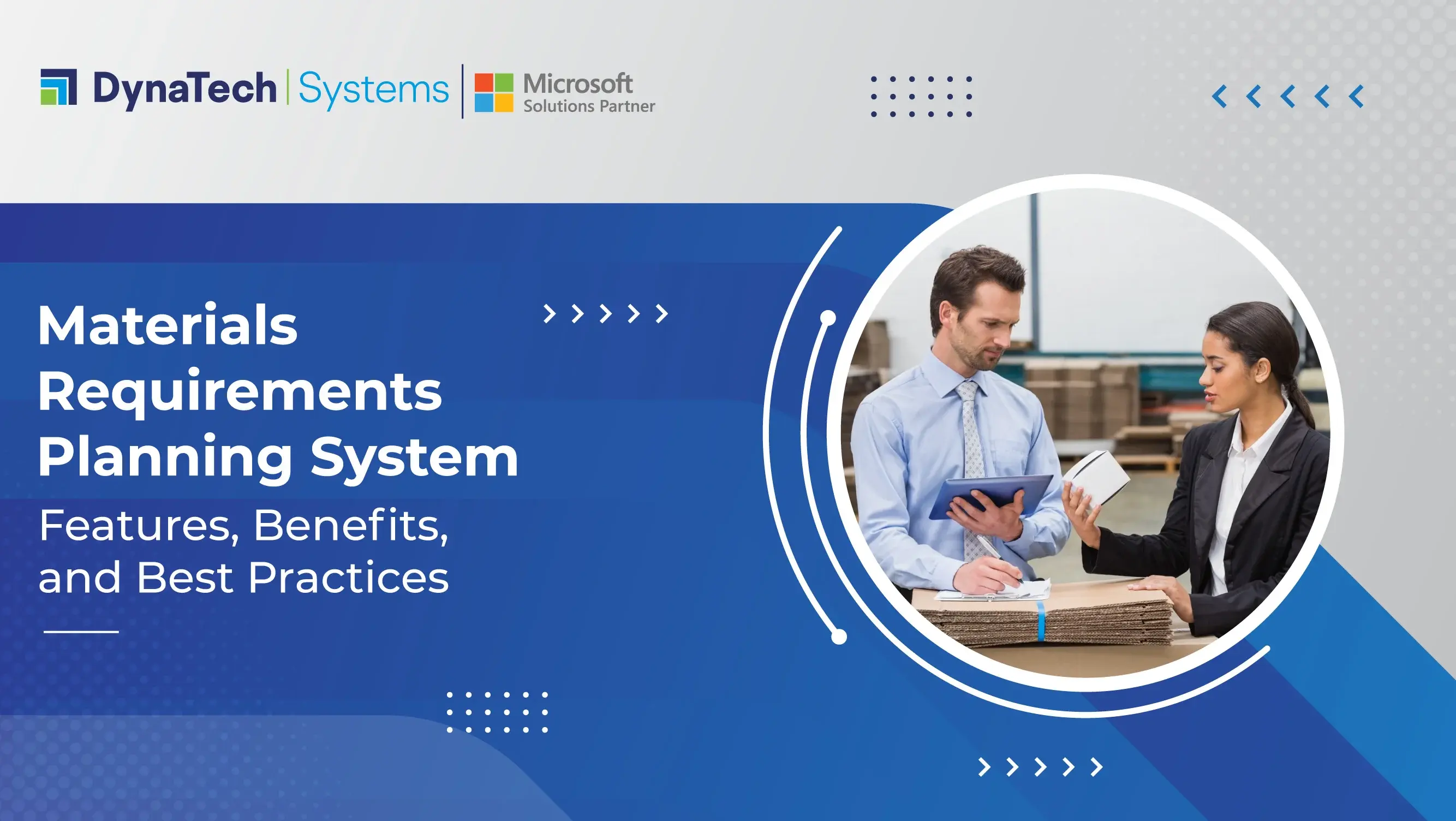What does a manufacturer dream of? All they want is streamlined operations, better inventory management, timely material procurement, and accurate demand predictions. The manufacturing industry faces various challenges, and one of them is estimating the accurate amount of raw material for current demand. If you fail to underestimate or overestimate, you will lose clients or overspend.
That is where the Material Requirements Planning comes into play. What is MRP? It is a modern, powerful, and comprehensive software-based integrated inventory and supply chain management system that helps businesses estimate the quantities of raw materials while maintaining inventory levels and scheduling production and deliveries accurately.
What Is Material Requirement Planning?
With Material Requirements Planning, manufacturing businesses can answer many questions with precision. A robust MRP system ensures that businesses have adequate raw materials and components available for production purposes as and when needed. It also ensures that the end products are delivered to consumers on time. The MRP system helps businesses on many fronts, such as demand prediction, inventory management, production planning, scheduling, and on-time product delivery.
In totality, the MRP material requirements planning system answers all three questions listed below:
- Which raw materials and components are needed for production purposes?
- How much quantity is needed?
- When are these raw materials and components needed?
Answering these questions can benefit businesses greatly by ensuring the optimization of business processes, productive inventory management, and streamlined supply chains.
What Are the Features of Material Requirement Planning System?
Manufacturing businesses must define specific requirements while developing or purchasing an MRP system or software. MRP features vary, depending on the unique needs of each business. However, there are some standard features that you must incorporate into your MRP system. Here is a list of features of MRP systems you must know.
Demand Estimation
Manufacturers must estimate demands accurately. Poor demand forecasting might lead to delayed production schedules, poor inventory management, and late product deliveries, which can negatively affect brands.
A sound MRP system can help businesses predict the demand for products efficiently and accurately. The system works backward to help you determine which final products you must invest in. It also helps businesses stock raw materials, perform machinery maintenance, estimate manufacturing time, and plan labor.
Data Organization
Managing production inventory data is crucial for businesses to leverage for further use. MRPs help companies store, reorganize, and manage this data, allowing superior data visibility across all departments for informed, data-driven decision-making. Manufacturers must require names, bill of materials, lead time, shelf time, quality control, machinery, labor details, etc.
Schedule Planning
One of the key features of Manufacturing Requirements Planning is optimized schedule planning. Proper and precise production schedules are vital for manufacturing businesses. MRPs help businesses track their inventory levels to optimize their production schedules, determine reorder points, and predict transportation lead times. They also give a comprehensive overview of various components, such as labor, machinery, activities, asset maintenance, inventory, etc.
Furthermore, some MRP systems, such as D365 for the manufacturing industry, allow businesses to set deadlines for different manufacturing process stages to maintain an overall production timeline. Choosing the right MRP for the supply chain can streamline processes while eliminating any possibility of errors.
Purchase Planning
Procurement and sourcing planning are vital in material requirement planning (MRP). To maintain optimum inventory levels and ensure uninterrupted operations, your MRP system must offer you a detailed list of materials to ensure optimal purchase planning. For example, if you are experiencing a long production lead time, purchasing raw materials immediately is recommended even if you have enough inventory in stock.
Inventory Management
Inventory management is one of the most vital aspects of any manufacturing business, ensuring uninterrupted operations and timely deliveries. MRP systems help businesses track all their production inventory with continuous monitoring of various inventory aspects, such as varying shelf lives, inventory turnover, stock availability, reorder scheduling, etc. Businesses can optimize their inventory management with a robust MRP system.
Cost Reporting
Do you also want to monitor procurement costs to bring them down with process optimization and regular cost reporting? Well, an MRP system can help you with that. You can have a central place to monitor all your procurement and manufacturing costs, make informed decisions, and identify areas where you can reduce costs.
What Are the Benefits of an MRP System?
There are many benefits of Manufacturing Requirement Planning software. Let's check them out in detail.
Availability of Materials When Needed
One of the critical advantages of MRP systems is that you can have the required stock of raw materials when needed. With demand forecasting and proactive purchasing, businesses can ensure the availability of raw materials and components for production schedules.
Inventory Reduction
An MRP system ensures that businesses order inventory only when needed. Such measures help businesses to eliminate the need to stock excessively and increase costs. With demand forecasting and proper production schedules, businesses can have adequate inventory levels to ensure uninterrupted operations.
Improved Production Efficiency
An MRP system also ensures that production schedules are planned comprehensively and in detail. It reduces production lead times, improves production workflows, and ensures smooth production runs. Also, an MRP system allows businesses to allocate and use all the resources optimally, such as machinery, labor, etc.
Optimized Planning and Control
Using historical production data and accurate demand forecasts, businesses can efficiently plan production schedules and quality control. With real-time actionable insights, stakeholders can also make better, informed decisions.
Better Supplier Relationship Management
An MRP system for manufacturing helps businesses automate their purchasing processes by generating purchase orders, invoices, and other required details. This improves the overall relationships with suppliers and other vendors. It also helps to coordinate with suppliers to ensure timely delivery of raw materials and other components.
MRP in Manufacturing
What is MRP in manufacturing? Earlier, MRP systems were used only in manufacturing businesses. However, today, various industries use MRP systems to streamline production processes and uninterrupted operations. The importance of an MRP system in the manufacturing industry is unmatched. Manufacturers might face unwanted consequences with poor demand forecasts and the unavailability of raw materials and components.
Businesses face increased costs and delayed deliveries, and they might also fail to respond to demand fluctuations by adjusting production schedules.
MRP in Supply Chain
Let's understand MRP in the supply chain. The primary purpose of introducing an MRP system is to ensure proper inventory optimization, the availability of raw materials, and the planning of data-based production schedules. Here is how an MRP system can help optimize the supply chain.
It helps in maintaining optimal inventory levels for uninterrupted operations.
It helps schedule production activities by dividing the process into different parts and calculating the time for each part to optimize the production schedules.
You can add MRP inputs, such as Bill of Materials, Master Production Schedule, and Inventory Status Records, and get outputs like Planned Orders, Order Rescheduling Notices, and Inventory Status Reports.
What Are the Best MRP Practices?
MRP works because it is a highly organized framework with streamlined processes, a clear understanding of MRP inputs and outputs, and swift calculations. It helps businesses view their operational procedures and processes with a calculated and optimized dimension. All teams, such as sales, marketing, production, purchasing, receiving, delivery, and shipping, must work together to ensure the success of an MRP system.
There are a total of three steps of an MRP process called:
- Identification of the Quantity Requirements: This step involves determining quantity requirements for a specific or full production schedule. Businesses identify the quantity requirements, create purchase orders for the required stock, and forecast demand.
- Running the MRP Calculations: Determine which materials are critical and delayed. Calculate the materials and requirements based on their availability to create accurate requirements.
- Order Completion: Precisely conclude the material requirements for the manufacturing orders and purchase orders.
Conclusion
Material Requirement Planning (MRP) is integral to the manufacturing process. It helps businesses predict demands, optimize production processes, ensure the availability of raw materials and components, and deliver products on time. Today, most modern ERP (Enterprise Resource Planning) systems include MRP in their features. With a robust and feature-rich MRP system, businesses can streamline their processes, efficiently plan their production schedules, and accurately predict demand to reduce costs, production lead times, and operational discrepancies.




























